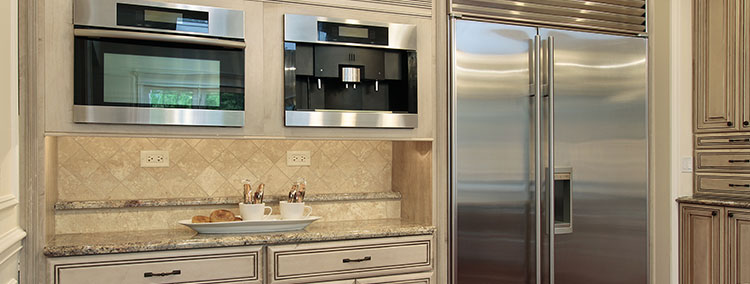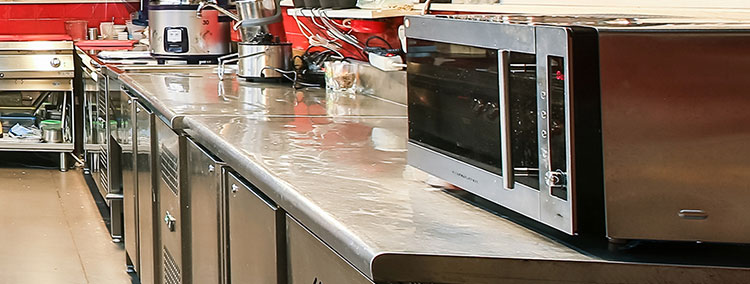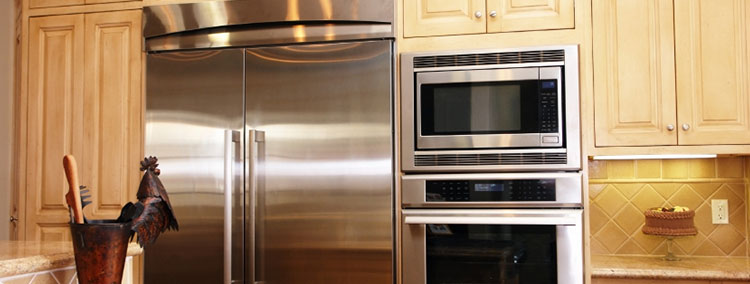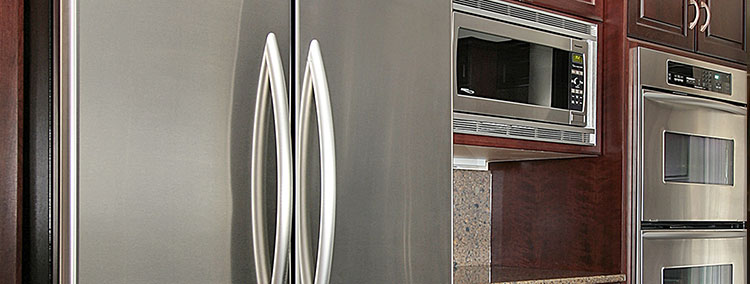If you have a smelly fridge, you should work on getting rid of the smells as soon as possible. This is because the smells make storing your food in the refrigerator undesirable. Sometimes, the smells are too strong that your kitchen is unlivable.
To make your kitchen more comfortable and fun, you need to get rid of these smells. To help you out, here is how to go about it:
Wipe down the fridge
To keep the refrigerator odor-free, clean it regularly by wiping all inner surfaces with a moist cloth.
You should then dry it well with a soft cloth. Clean the outside using a washing-up liquid solution, wiping down any metal parts with a damp cloth. For the best outcome, use a general-purpose e-cloth.
You can do all the wiping yourself without hiring a refrigerator repair professional.
Get rid of the spoiled food.
Spoiled food is the primary cause of a smelly fridge, so you should eliminate it. And there is no magic to it. You simply need to reach the insides of the refrigerator and remove any spoiled or expired products.
To be safe, remove all the materials and only return what is expired.
Use baking soda
You should place an open box of baking soda or a small cup of baking soda on the refrigerator’s shelf. This will help to remove unpleasant odors by absorbing them. You should replace this box every 1-2 months for optimal results.
Use coffee grounds
Like baking soda, coffee grounds will also absorb the smells. You should place a bowl of freshly ground coffee in the refrigerator. The coffee grinds will absorb and hide odors. To keep your fridge smelling fresh, replace the grounds every several days.
Make use of vanilla.
Here, you need to soak a cotton ball or piece of cloth in vanilla extract and refrigerate. Vanilla has a perfume that will disguise other odors.
Mask the smells using citrus peels.
You need to soak a cotton ball or piece of cloth in vanilla extract and chill. Vanilla has a pleasant aroma that can mask the odors.
Tricks to keep your fridge smelling fresh
Prevention is always better than cure. Instead of working hard to restore your fridge smelling good, you should keep it fresh all the time, negating the need to use smell-killing materials.
Some of the things you need to do to achieve this include:
Make use of the humidity controls
You need to keep your food fresher for longer by storing it in the ‘crisper’ drawer, a dedicated section where you can manage the internal moisture level.
Most of the modern humidity drawers have two settings: you should place farmers’ products, such as fruits and leafy greens, in the high-humidity drawer, while poultry and fish are best stored in a low-moisture environment to avoid condensation and bacteria from forming.
Use airtight containers
The thrifty will be familiar with keeping leftovers to reduce food waste. The rookie mistake you can make is putting leftovers in a bowl with clingfilm or tin foil on top (tin foil is the worst because it makes it difficult to see what food is inside!)
Using airtight containers will keep the food fresher for longer and prevent any unpleasant odors from escaping if you mistakenly leave it in the fridge past its prime.
Be organized
So, you have your airtight containers, but do you recall when you put the leftover lasagne in the fridge? Labeling and dating your leftovers will not only keep you from getting food illness but also keep the food from spoiling.
This is because you can tell when the food will get spoiled and remove it.
When labeling the food, do it in an open area where everyone can see it. You also should write the dates in bold, big letters so that someone doesn’t have to fish for them.
Keep your shelves clean.
You need to clean any movable portions of the refrigerator, such as the shelves and drawers. Thankfully, most modern fridges simplify this by providing easy access to glass shelves and drawers you can easily remove.
All you have to do is soak them in warm, soapy water for a few minutes before using a kitchen sponge to remove stains. Allow the shelves to air-dry completely as you thoroughly clean the refrigerator.
Make it a habit to remove spills immediately.
It’s a good practice to wipe up spills and drips right away. If you don’t do this, you might have to deal with them when they’ve caked up and started to smell. And you don’t want this, do you?
Besides cleaning the spills immediately, you also should line the shelves of your fridge with fridge liners. The liners will absorb unexpected spills and are easy to dispose of. When a mess occurs, just remove and wash the affected liner rather than cleaning the entire fridge.
Watch the temperature of your appliance.
Bad odors are frequently produced by food rotting, which is why fridge temperature is critical. A high temperature causes food spoiling, but a low temperature may cause energy waste. Ideally, adjust your refrigerator to 0 to 4 degrees Celsius and freezer to -18 degrees Celsius.
If your fridge or freezer is still not cold enough after you’ve adjusted the temperature, it could be a sign of a bigger problem.
Call an appliance repair Alexandria professional to inspect your refrigerator for leaks, drip pan issues, or a malfunctioning defrost drain. If not addressed, these concerns can boost refrigerator temperatures and cause food to spoil prematurely. Which, in turn, leads to the bad smells that you don’t want.
When hiring a repair professional, don’t hire just any other. Take your time to find a reputable one that knows what they are doing. The last thing you should do is to hire a contractor who causes more harm than your unit had.




